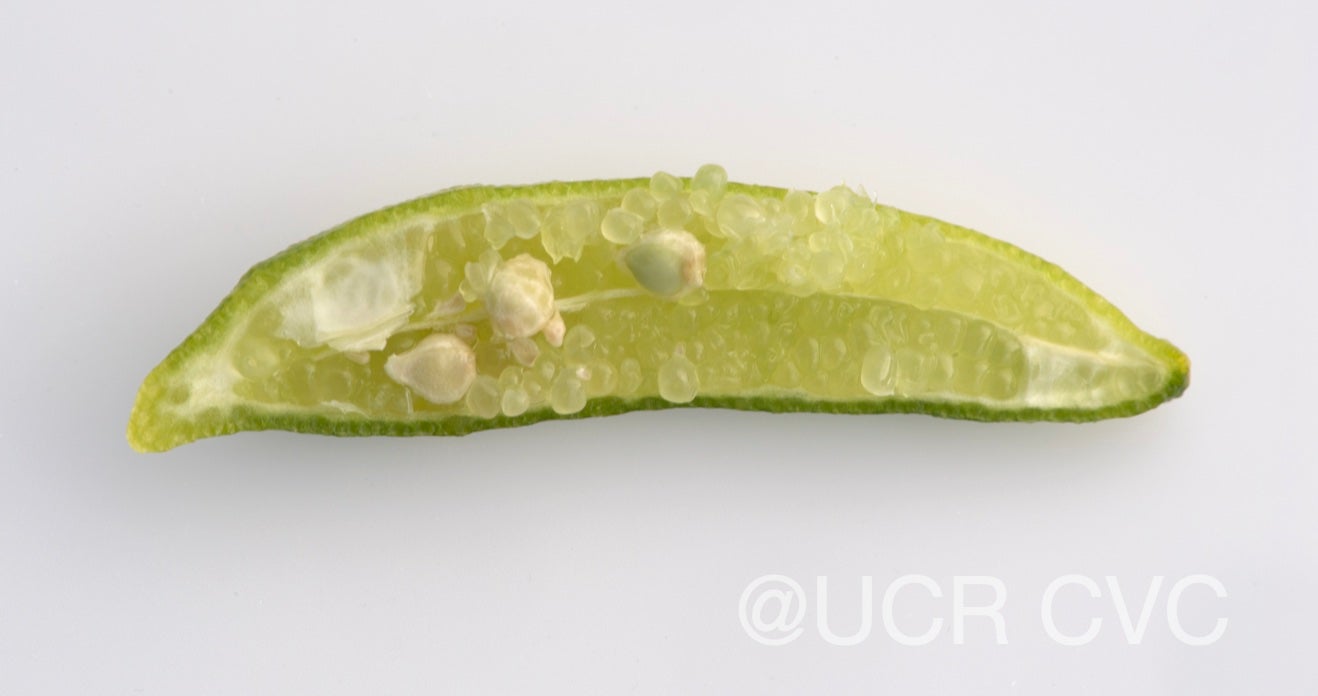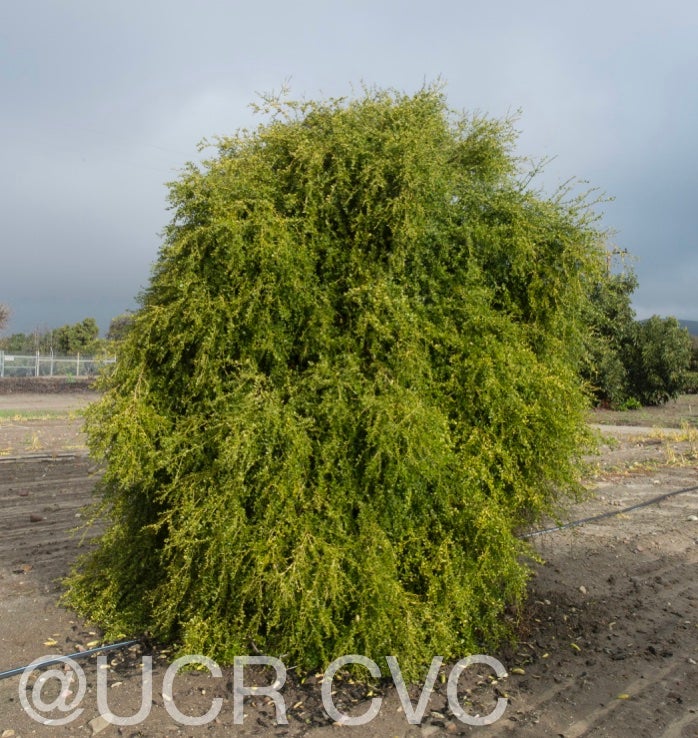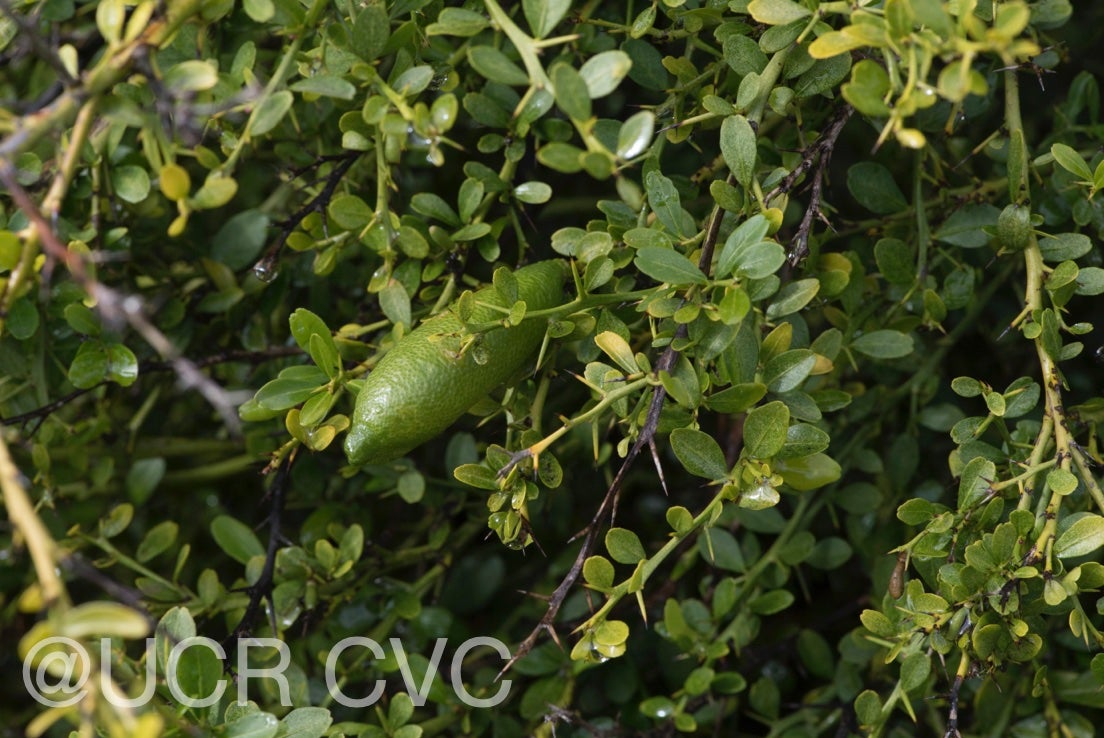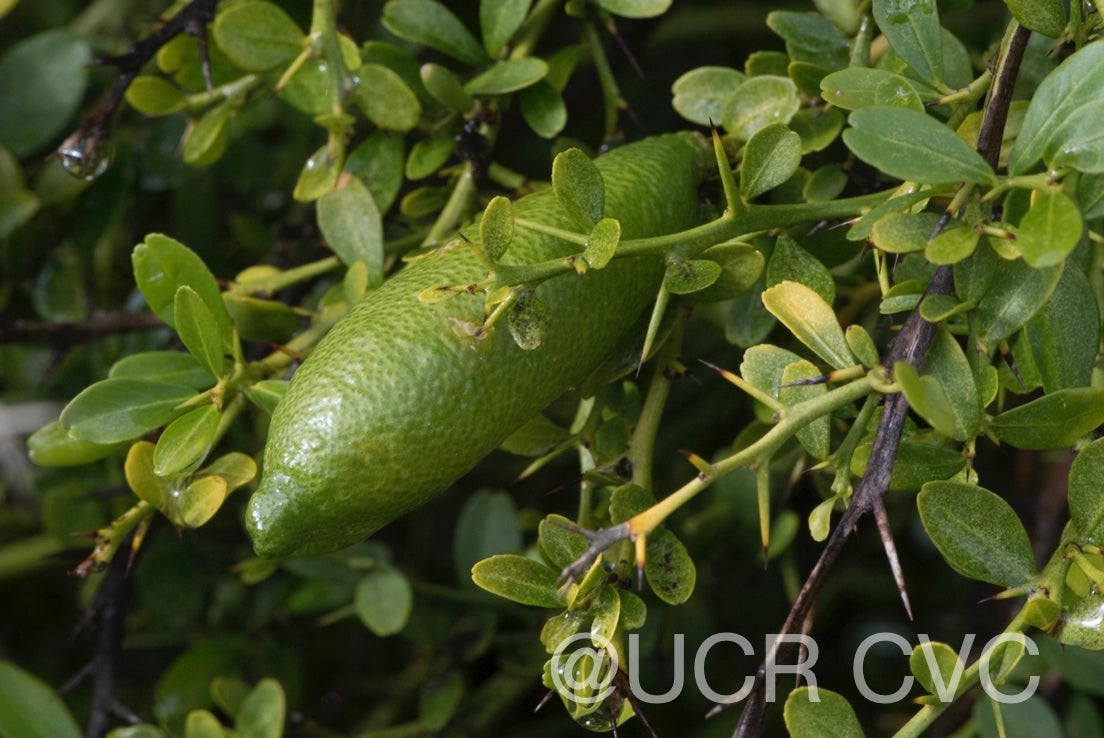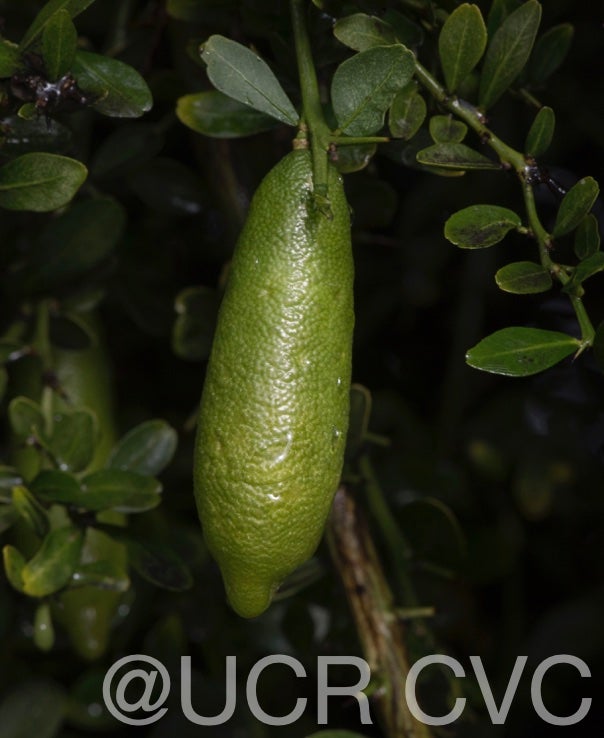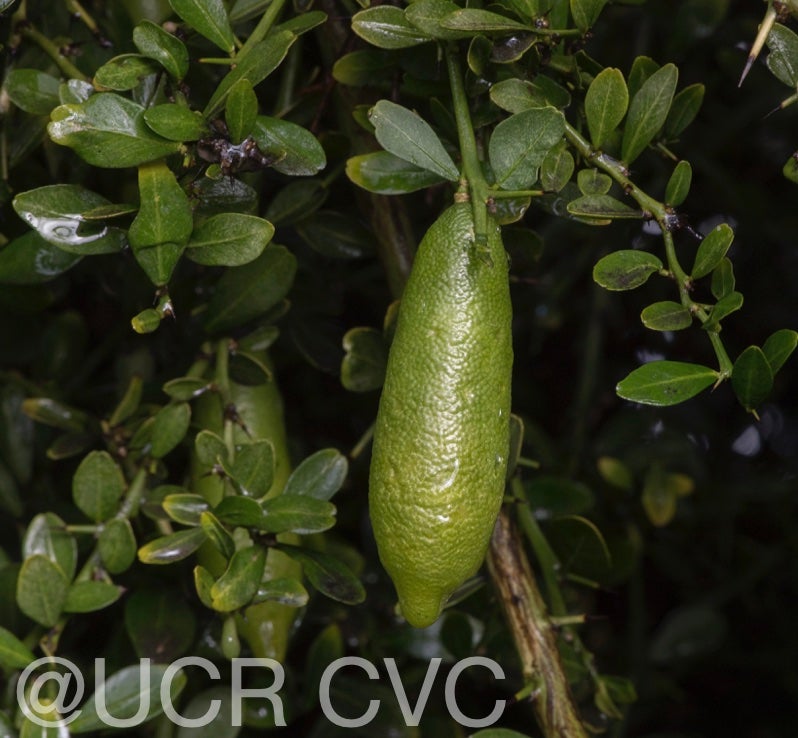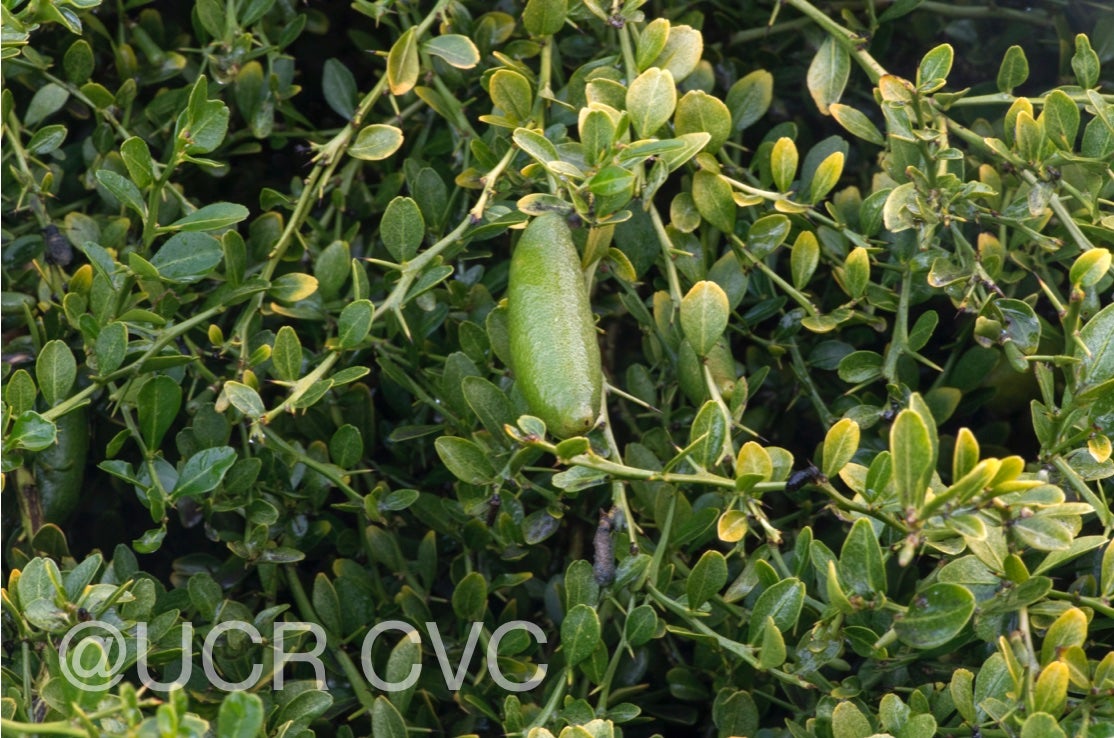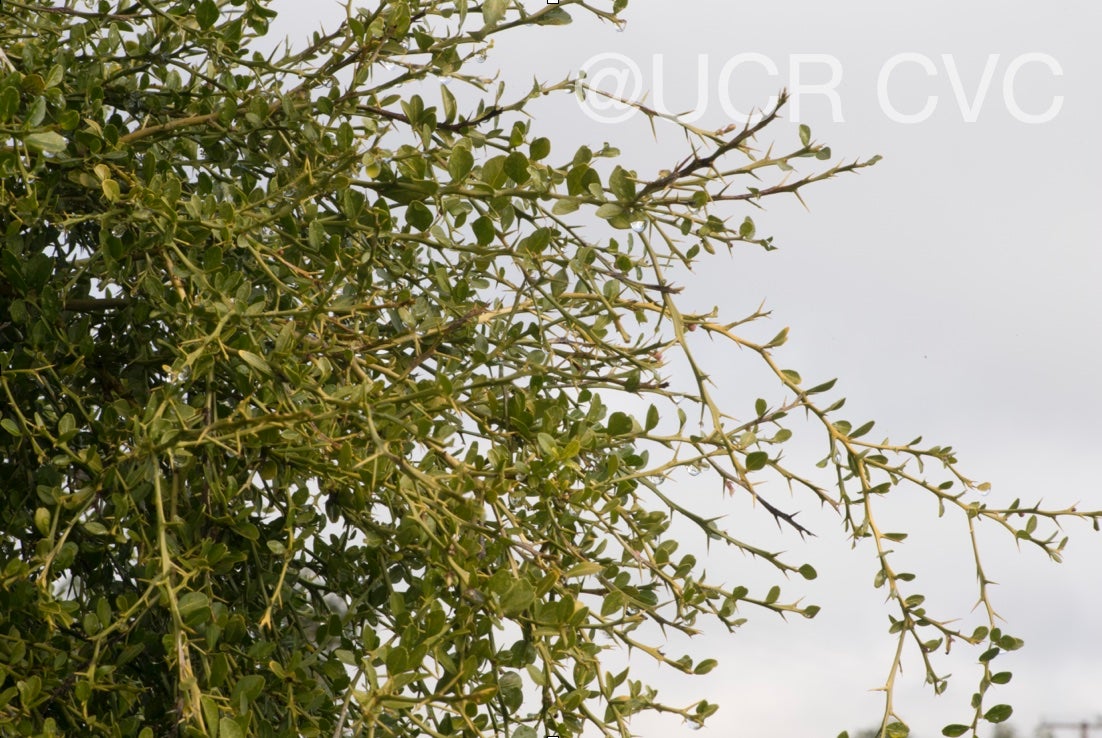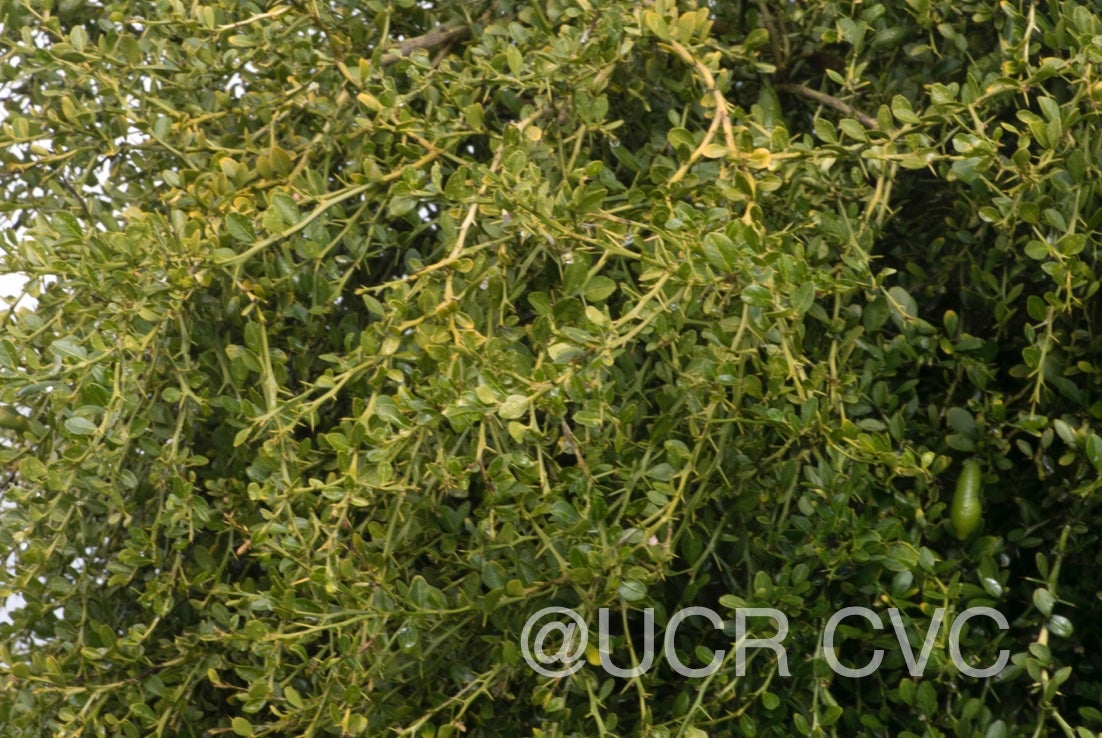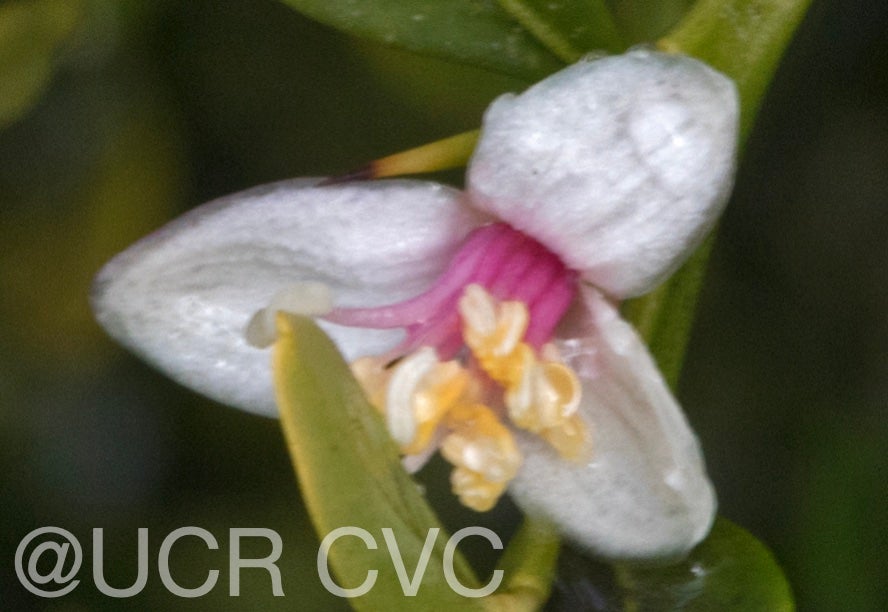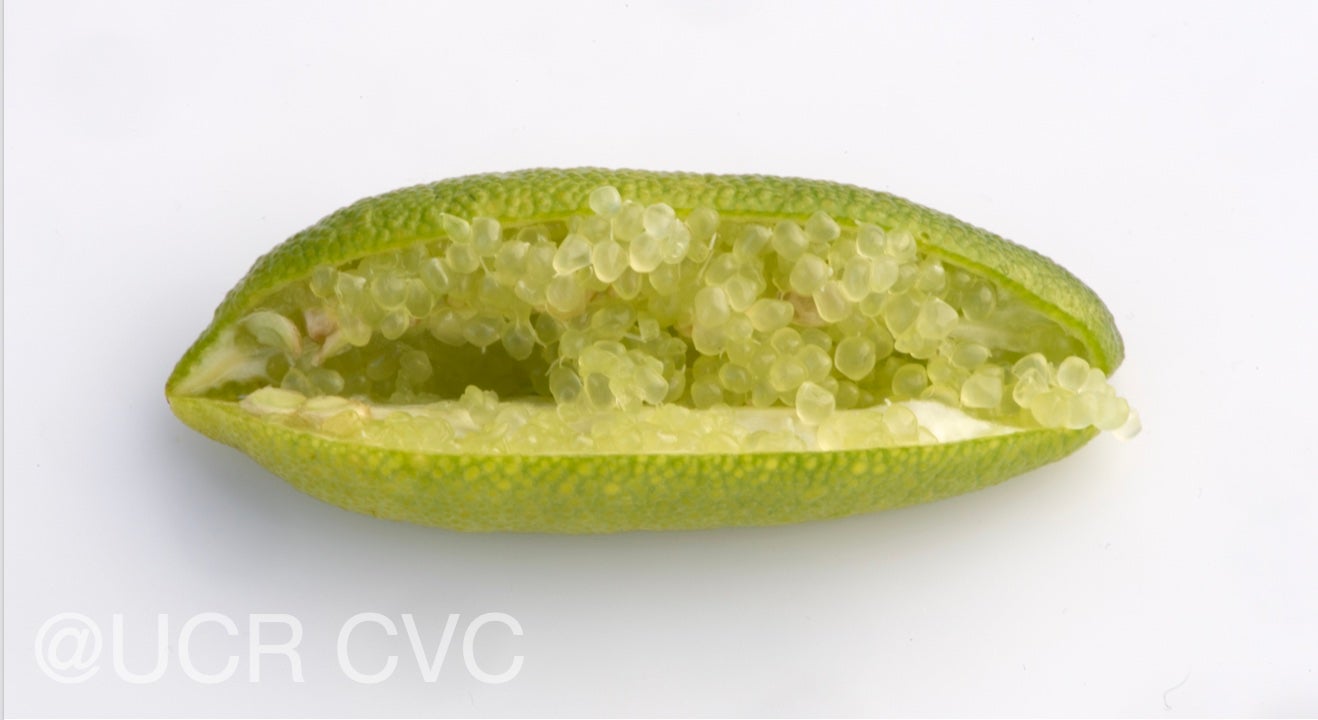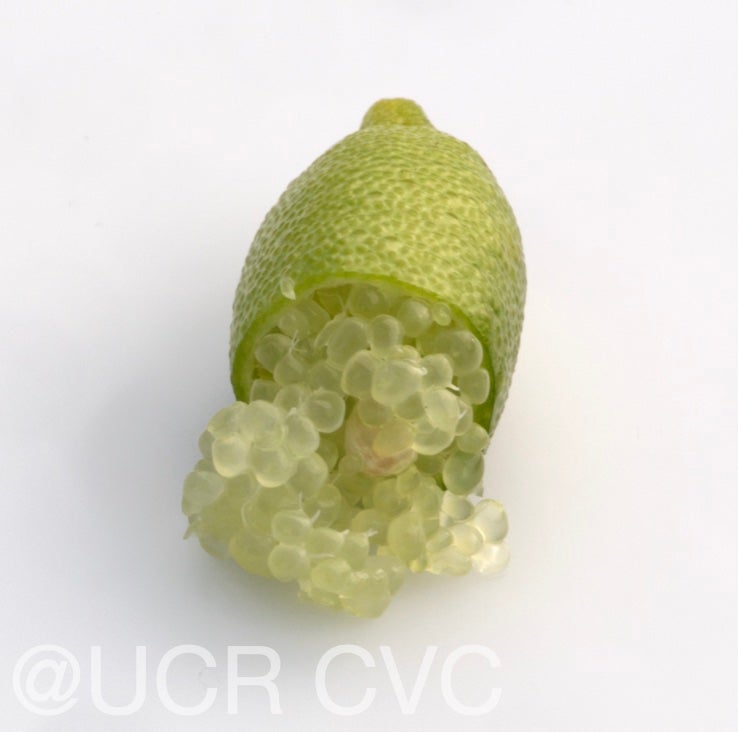Australian finger lime
CRC 3664
PI 539735, 306117
Source
Received as budwood from Dr. Joe Furr, USDCS, Indio, CA (from Yuma, Arizona), 1968.
Parentage/origins
Parents unknown.
Rootstocks of accession
Cleopatra mandarin, Schaub rough lemon.
Season of ripeness at Riverside
Year round; peak fruit production is November to December
Season of flowering at Riverside
February to April
Notes and observations
*Probably received at CRC as plants. See notes for CRC 3663.
Description from The Citrus Industry Vol. 1 (1967)
"First leaves of young seedlings small, 3-5 X 2-4 mm, ovate, with very short wingless petioles borne on numerous slender, horizontal twigs with internodes often only 2-4 mm long, with sharp, slender spines, 7-12 mm long, at the nodes; the upright twigs of young plants have similar leaves and spines but the internodes are sometimes 5-8 mm long; the upright, strongly angled, vigorous twigs of mature trees, which have internodes 8-12 mm long with single sharp spines, 5-10 mm long, have lozenge-shaped leaves, 22-25 X 14-15 mm, obscurely toothed in the upper half, gradually narrowed to a blunt, truncate base with which the petiole articulates; lateral veins faintly marked above, more clearly below, 6-10 pairs, arising at an angle of 35°-45° with the midrib, lower ones longer, upper ones soon branching, all with several anastomosing curved cross-veins; leaves tapering into a truncate or emarginate tip, those on lateral twigs 8-20 X 2-10 mm, the smaller ones abruptly truncate, often irregularly emarginate; spines slender, short, 3-8 mm long; flowers arising singly in the axils of the leaves (or occasionally in pairs); flower buds subglobose or obovate, 4 X 5 mm, borne on very short pedicels, 1-2 mm long; flowers usually 5-merous but sometimes 3-4-merous; sepals free, small, concave, minutely ciliate; petals oblong, 7-8 mm long; stamens 20-25, free, pistils short, stout, ovary with 5-7 locules; ovules numerous, 8-16 (or even 20) in each locule; fruits cylindric-fusiform, 6.5-10 X 1.5-2.5 cm, often slightly curved, narrowed at both tip and base, often showing a blunt protuberance at one or both ends; peel rough with numerous oil glands, greenish-yellow at maturity; pulp-vesicles nearly free or loosely cohering, long-stalked, ovoid, ending in a very blunt or rounded tip, about 1.7-3 X 1.2-1.5 mm, borne on a slender stalk 1-2 mm long; seeds numerous, small, 6-7 mm long, ovoid, monoembryonic, usually flattened on one side and often showing small, shallow depressions on the other faces (probably caused by mutual pressure of the pulp-vesicles exerted during development of the fruit); testa smooth (not wrinkled as in Eremocitrus glauca); cotyledons hypogeous in germination.
This, the type species of the genus Microcitrus, has several characters separating it from all of the species of Citrus. It is also very clearly separated from the other species of Microcitrus by its very long, slender fruits that are unique in the orange subfamily (see fig. 3-44,E). They have numerous seeds (or rudiments) in each segment (more numerous than in any other true citrus fruit). The pulp is composed of loosely grouped, long-stalked, subglobose or pyriform pulp-vesicles, tapering bluntly to the tip. These pulp-vesicles are very different from those of M. australis but are much like those of M. inodora; they also resemble somewhat those of Citrus (Papeda) hystrix, as noted by Penzig (1887, pp. 214-17), who was the first to describe the anatomy of the fruits, seeds, and pulp-vesicles of M. australasica. The very acrid pulp has a harsh aftertaste, probably due to droplets of acrid oil in the pulp-vesicles, such as have been found in the Australian round lime. Francis (1929, p. 174) stated that the fruits, both of this species and of M. australis, "have a lemon-like flavor accompanied by a taste of a turpentine nature."
The finger-lime of the coastal regions of northeastern Australia is a tall shrub or small tree and makes a handsome ornamental. The seedlings are very spiny. The first leaves are minute linear cataphylls; these gradually merge into juvenile foliage which, in turn, merges into the mature foliage, the leaves of which are smaller than those of any other True Citrus Fruit Tree with the exception of Eremocitrus glauca when the latter occurs in very dry situations. The branches on young plants often stand out nearly at right angles to the stem, giving the young plant the appearance of a very dwarfed fir tree. This species is precocious; Oliver (1911, p. 15) figured a small branch of a two-year-old seedling bearing two fruits.
Uphof (1932, pp. 138-39), in an examination of five trees of M. australasica, found that most of the flowers were male and that only a very few were perfect. He examined the flowers on eight twigs and found, out of 161 flowers, that 151 were male and that only ten were perfect.
Availability
Not commercially available in California.
USDA Germplasm Resources Information Network page for Microcitrus australasica (CRC 3664)
